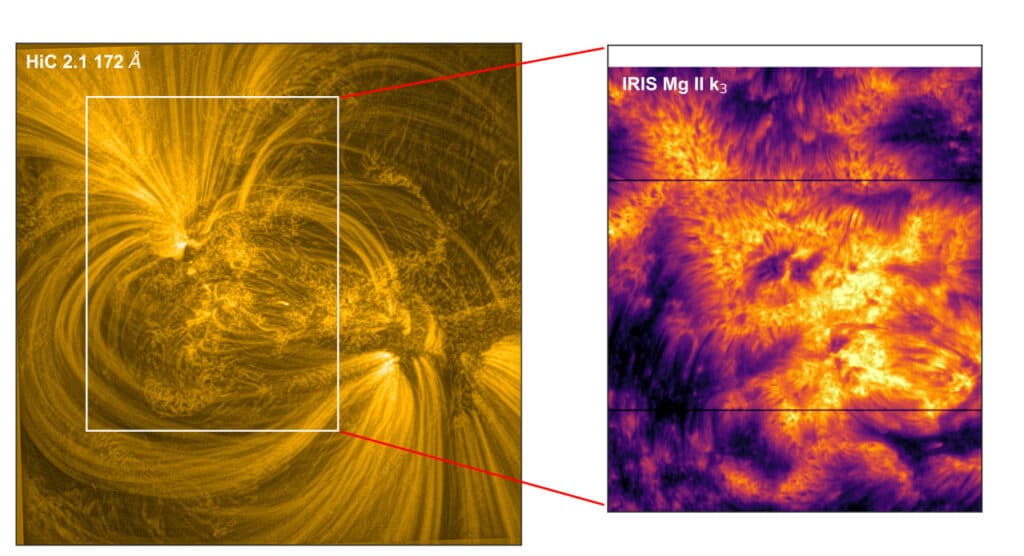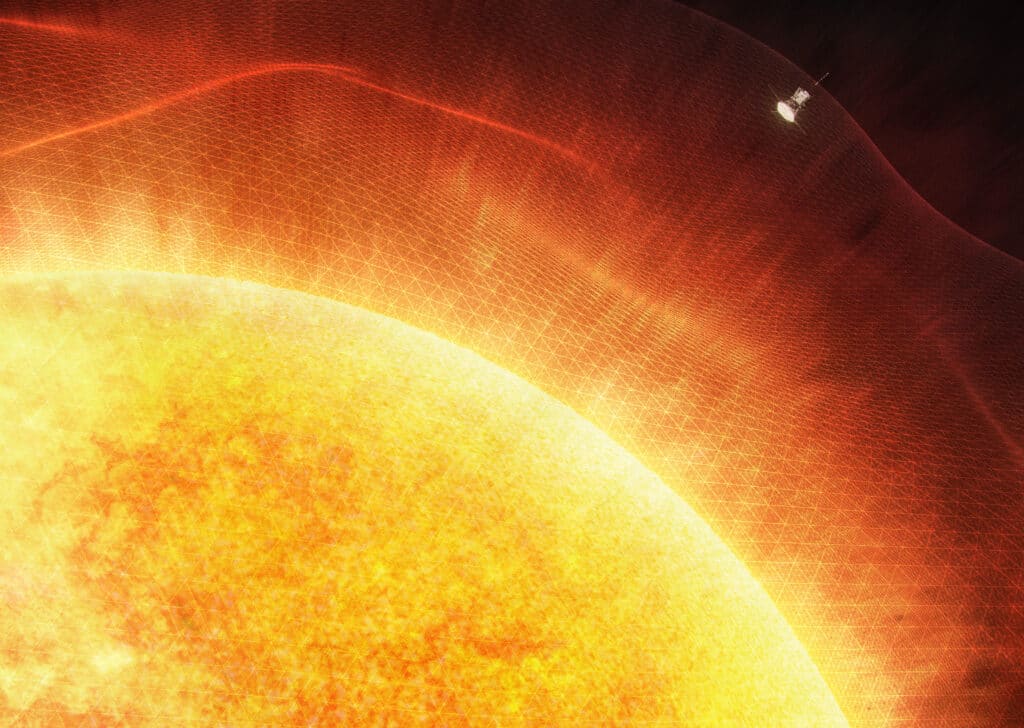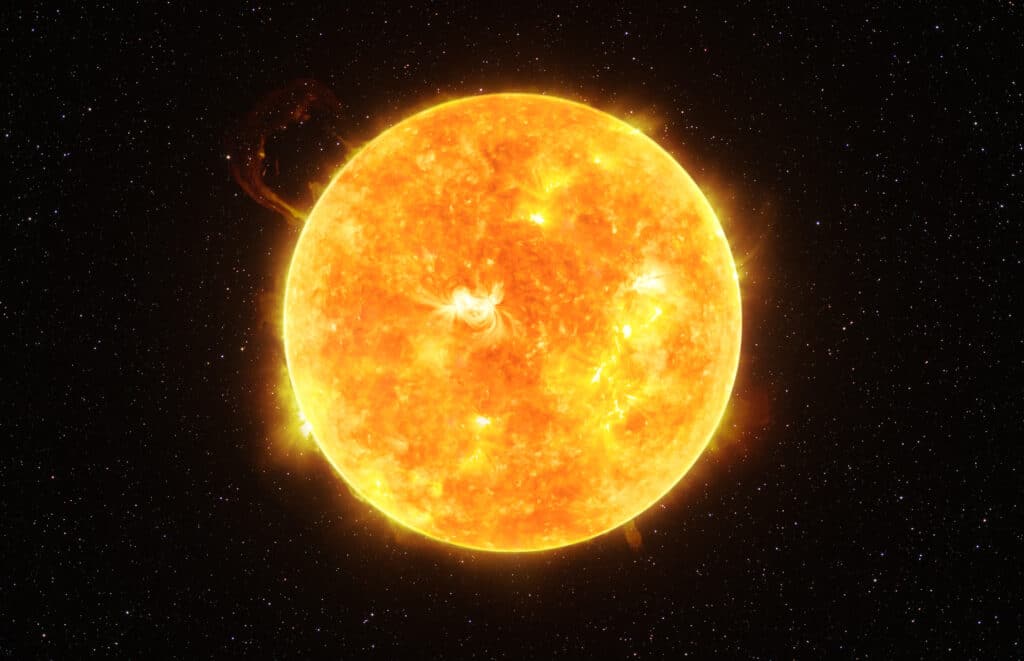The surface of our Sun is a turbulent, ever-changing landscape of incredible heat and complex magnetic activity. Amidst this chaos, scientists have long puzzled over a peculiar feature they’ve dubbed “solar moss” due to its spongy, mottled appearance. Now, a new study using NASA’s cutting-edge space observatories has finally shed light on the secrets of this mysterious phenomenon. These exciting findings are published in the journal Nature Astronomy.
Solar moss is found in areas of strong magnetic fields around sunspots, straddling two layers of the Sun’s atmosphere — the chromosphere and the corona. Strangely, the moss exhibits temperatures nearly 100 times hotter than the Sun’s visible surface just below it, soaring to a scorching 1.8 million degrees Fahrenheit. For decades, researchers have struggled to understand how this dramatic heating occurs and how the moss connects to the Sun’s lower atmospheric layers.
The breakthrough came thanks to an innovative collaboration between two of NASA’s solar-observing missions: the Interface Region Imaging Spectrograph (IRIS) satellite and the High-Resolution Coronal Imager (Hi-C) sounding rocket. IRIS provided detailed spectra of light from the Sun’s chromosphere, which lies just below the super-heated corona. Meanwhile, Hi-C captured some of the highest resolution images ever taken of the corona itself, including the sizzling solar moss.

By combining these observations with state-of-the-art 3D computer simulations, the research team gained unprecedented insights into the physical processes driving the extreme temperatures in the moss. The findings point to a previously underestimated mechanism: electric currents.
The Sun’s atmosphere is permeated by a tangled web of magnetic fields, a bit like a pot of spaghetti. Where these magnetic strands braid and twist around each other, they can create strong electric currents. The study found clear evidence that these currents are actively heating the solar plasma to a wide range of temperatures, from a mere 10,000 degrees Fahrenheit in the chromosphere to the blistering 1.8 million degrees Fahrenheit seen in the corona and moss.
“Thanks to the high-resolution observations and our advanced numerical simulations, we’re able to figure out part of this mystery that’s stumped us for the past quarter of a century,” says study author Souvik Bose, a research scientist at Lockheed Martin Solar and Astrophysics Laboratory and Bay Area Environmental Institute, NASA’s Ames Research Center in California’s Silicon Valley, in a media release. “However, this is just a piece of the puzzle; it doesn’t solve the whole problem.”
What’s remarkable is that the heating from these braided magnetic fields appears to extend from the corona all the way down to the chromosphere, a region too cool for heat to effectively travel via thermal conduction. This suggests the electric currents and the magnetic drama above are somehow impacting the Sun’s lower atmosphere directly.
The study also found that the hot, dense conditions in the moss are highly localized and can vary significantly between different regions across the Sun’s surface. This highlights the incredibly dynamic and complex nature of the Sun’s magnetic activity.

While these findings mark a significant leap forward in understanding solar moss and coronal heating, the picture is far from complete. To further unravel these enticing solar mysteries, scientists are already planning additional missions to study the Sun in exquisite detail, including a second flight of Hi-C to capture a solar flare and coordinated observations with IRIS.
The NASA missions and studies like this one are vital steps in that grand pursuit, reminding us that even the most commonplace cosmic sight still harbors profound secrets waiting to be illuminated.












